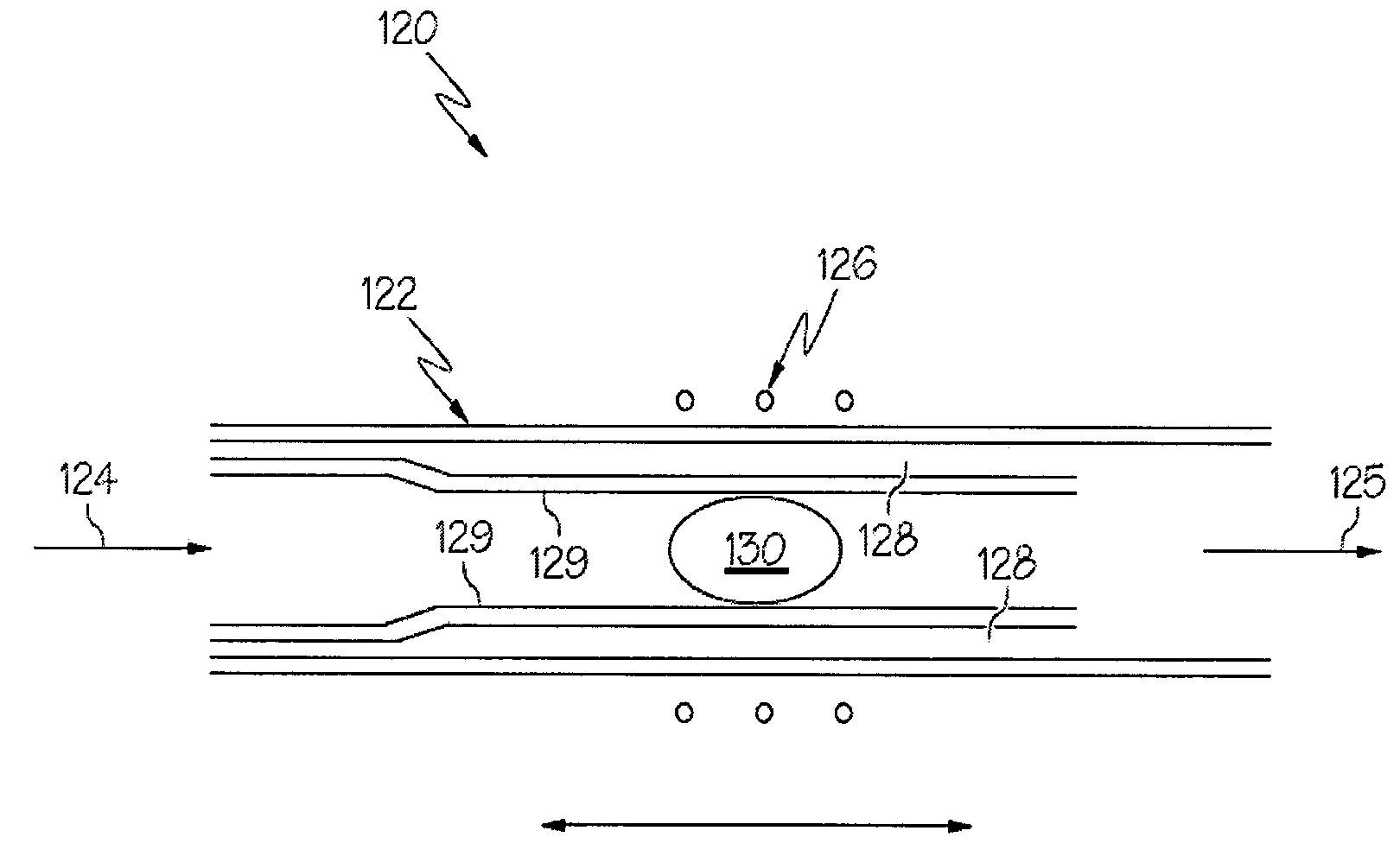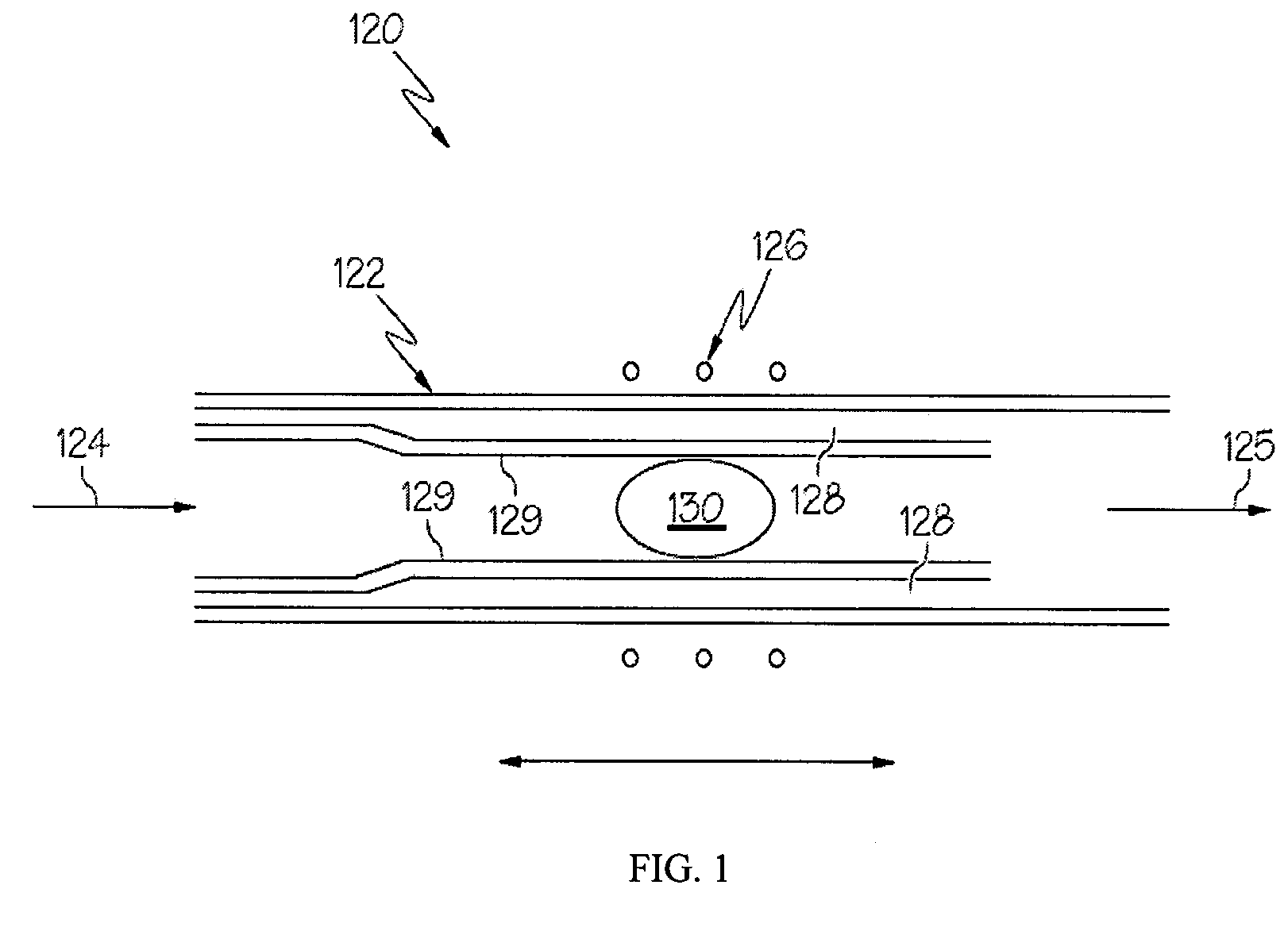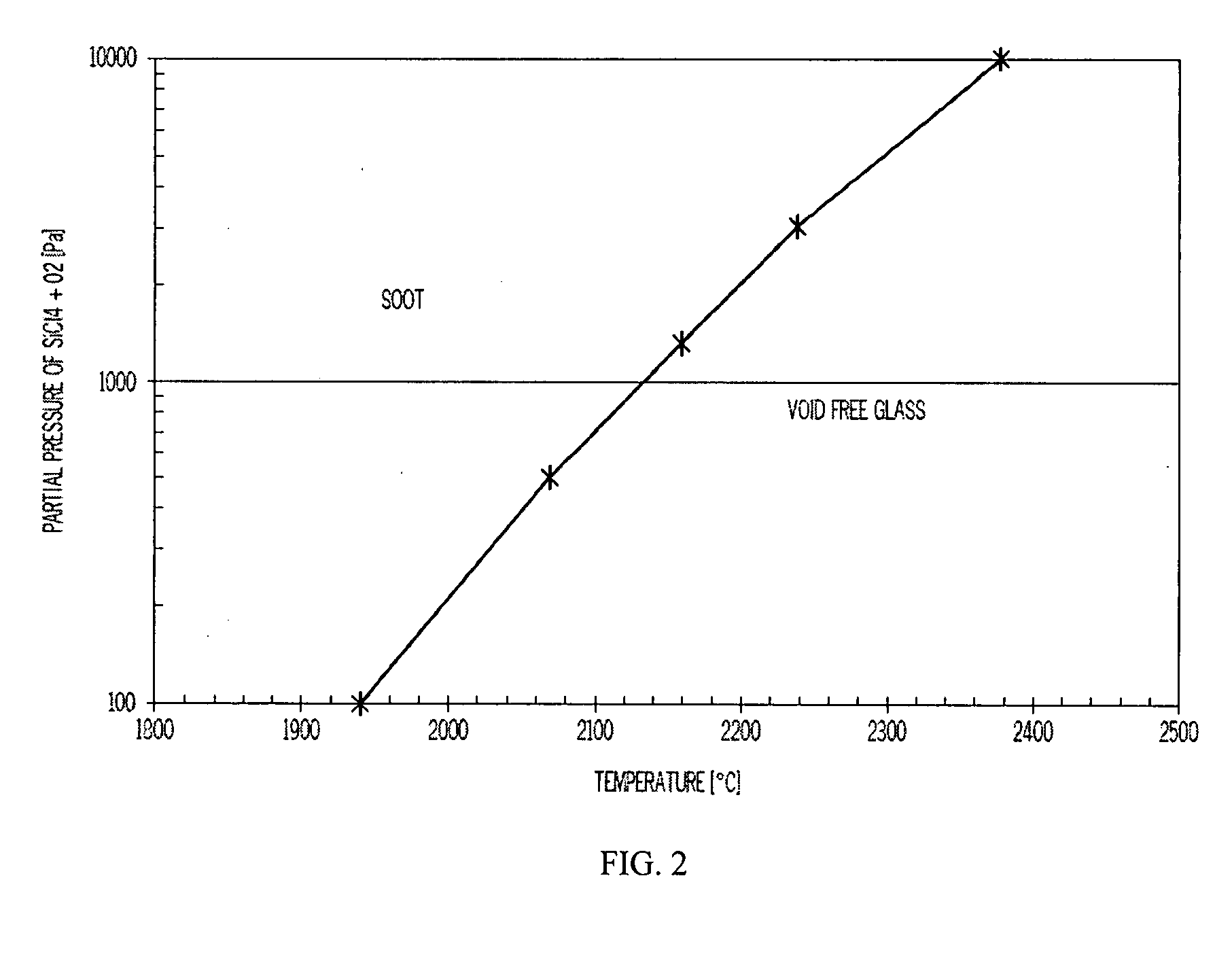Methods for making optical fiber preforms and microstructured optical fibers
a technology of microstructured optical fibers and preforms, applied in the direction of manufacturing tools, glass deposition burners, other domestic articles, etc., can solve the problems of affecting dramatically the attenuation of fibers, reshaping or deformation, and low productivity
- Summary
- Abstract
- Description
- Claims
- Application Information
AI Technical Summary
Benefits of technology
Problems solved by technology
Method used
Image
Examples
Embodiment Construction
[0018]The methods of the present invention utilize plasma chemical vapor deposition (PCVD) techniques to form optical fiber preforms having a non-periodic distribution of voids. The resultant preform is used to produce a microstructured optical fiber. At least a portion of the microstructured optical fiber is formed from a region of the optical fiber preform comprising voids such that at least a portion of the microstructured optical fiber has a non-periodic distribution of voids extending axially along the microstructured optical fiber.
[0019]FIG. 1 is a schematic diagram of a PCVD operation 120 for making an optical fiber preform in accordance with the present invention. As shown in FIG. 1, a substrate tube 122 is positioned in an RF coil 126 or another suitable plasma excitation source. A heat source (not shown), such as a furnace, may be used in conjunction with the RF coil to initially heat the substrate tube 122. The substrate tube 122 may comprise silica glass or silica glass ...
PUM
| Property | Measurement | Unit |
|---|---|---|
| Temperature | aaaaa | aaaaa |
| Temperature | aaaaa | aaaaa |
| Temperature | aaaaa | aaaaa |
Abstract
Description
Claims
Application Information
 Login to View More
Login to View More - R&D
- Intellectual Property
- Life Sciences
- Materials
- Tech Scout
- Unparalleled Data Quality
- Higher Quality Content
- 60% Fewer Hallucinations
Browse by: Latest US Patents, China's latest patents, Technical Efficacy Thesaurus, Application Domain, Technology Topic, Popular Technical Reports.
© 2025 PatSnap. All rights reserved.Legal|Privacy policy|Modern Slavery Act Transparency Statement|Sitemap|About US| Contact US: help@patsnap.com



